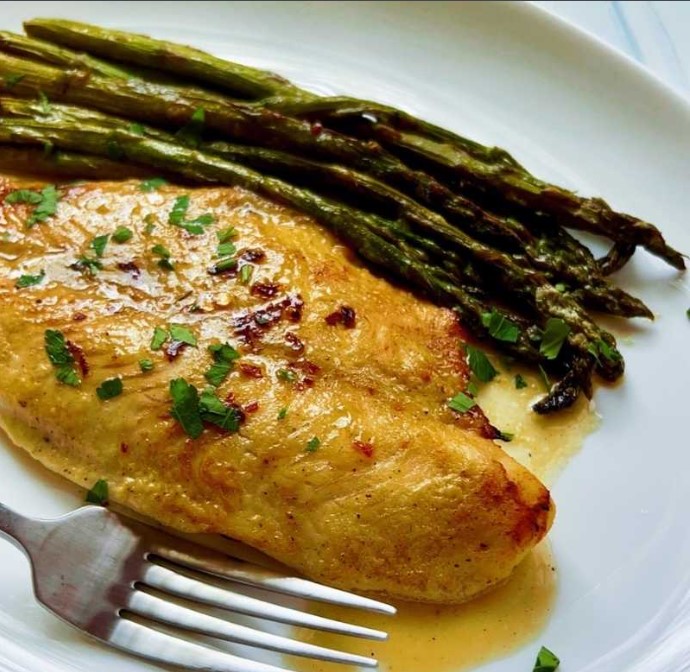BOURSESSENEGAL – When exploring healthy and delicious seafood options, swai fish stands out for its mild flavor and nutritional benefits. Originating from Southeast Asia, this freshwater fish offers versatility in cooking, making it a popular choice for various dishes. Whether you’re looking to boost your protein intake or try something new, swai provides a satisfying option. Let’s dive into what makes swai special, its nutritional profile, cooking methods, and more.
What is Swai Fish?
Swai fish, scientifically known as Pangasius hypophthalmus, is a species of catfish commonly found in the Mekong River. It thrives in freshwater environments and is primarily farmed in Vietnam. Although it’s often confused with traditional catfish, swai has a lighter, flakier texture and a milder taste, making it suitable for various culinary styles.
Appearance and Flavor Profile
Swai fish has a delicate pink or white flesh and a soft, flaky texture. Its mild flavor makes it appealing to those who may not enjoy stronger fish tastes. This characteristic allows it to absorb flavors from marinades and spices well, making it an excellent ingredient in numerous dishes.
Nutritional Benefits of Swai Fish
High-Quality Protein Source
One of the primary benefits of swai is its high protein content. A typical 3-ounce serving contains around 20 grams of protein, essential for muscle repair and overall health. Incorporating swai into your diet can help you meet your daily protein needs without adding excessive calories.
Low in Calories and Fat
Swai fish is relatively low in calories, making it an excellent choice for those looking to manage their weight. With approximately 90-100 calories per serving and minimal saturated fat, it supports heart health while satisfying your hunger.
Rich in Omega-3 Fatty Acids
Although not as rich in omega-3 fatty acids as fatty fish like salmon, swai fish still provides a beneficial amount. Omega-3s play a crucial role in reducing inflammation and supporting cardiovascular health. Including swai in your meals can help balance your omega-3 intake.
Packed with Essential Nutrients
Swai fish is a source of various vitamins and minerals, such as:
- Vitamin B12: Vital for energy production and nerve function.
- Selenium: An antioxidant that supports immune health.
- Phosphorus: Important for bone health and energy metabolism.
How to Cook Swai Fish
Baking is a straightforward and healthy method for preparing swai. Preheat your oven to 375°F (190°C). Season the fish with olive oil, lemon juice, garlic, salt, and pepper. Place it on a baking sheet lined with parchment paper and bake for 15-20 minutes, or until it flakes easily with a fork. This method enhances the fish’s natural flavors while retaining moisture.
Pan-Seared Swai Fish
For a quick and delicious meal, try pan-searing swai. Heat a tablespoon of olive oil in a skillet over medium heat. Season the fish with your favorite spices, such as paprika or cumin. Cook for about 3-4 minutes per side until golden brown. This technique creates a crispy exterior while keeping the inside tender.
Grilled Swai Fish
Grilling adds a unique smoky flavor to swai. Marinate the fish in a mixture of olive oil, garlic, and herbs for at least 30 minutes. Preheat the grill and cook the fish for about 5-6 minutes on each side. This method highlights the fish’s texture and makes for an enjoyable outdoor meal.
Swai Fish Tacos
Swai tacos offer a fun and flavorful way to enjoy this fish. Use grilled or pan-seared swai, placing it in corn tortillas with shredded cabbage, avocado, and a drizzle of lime juice. This combination creates a delightful blend of textures and flavors, perfect for casual gatherings or family dinners.
Where to Buy Swai Fish
You can find swai in most grocery stores, seafood markets, or Asian grocery stores. When purchasing, look for fillets that are firm and have a fresh, mild scent. Choosing wild-caught or sustainably farmed options ensures you’re getting a quality product.
Safety and Sustainability
Potential Contaminants
Like many fish, swai can be susceptible to contaminants. To ensure you’re making a safe choice, buy swai from reputable sources. Check for quality certifications that indicate sustainable farming practices. This ensures a product that is both safe to eat and environmentally friendly.
Choosing Sustainable Options
Sustainability plays a critical role in seafood consumption. When purchasing swai , seek out suppliers that follow responsible farming methods. This helps protect ecosystems and ensures that future generations can continue to enjoy this delicious fish.
Popular Swai Fish Recipes
Swai Fish with Lemon Butter Sauce
This simple yet elegant dish highlights the delicate flavor of swai. Sauté the fish in a pan with butter, garlic, and lemon juice. Serve it with steamed vegetables or over a bed of rice for a complete meal.
Spicy Swai Fish Curry
For those who enjoy bold flavors, a spicy swai curry can be a fantastic option. Cook swai in a rich coconut milk-based curry sauce, incorporating spices like turmeric and cumin. Serve with jasmine rice for a hearty dish.
Swai Fish Stir-Fry
Stir-frying swai with a mix of colorful vegetables creates a quick and healthy meal. Add soy sauce and ginger for an extra flavor boost. This dish is not only nutritious but also visually appealing.
Conclusion
Incorporating swai fish into your diet can enhance both flavor and nutrition. With its high protein content, low calorie count, and versatility, swai is a fantastic option for various meals. Whether you choose to bake, grill, or stir-fry, this fish adapts well to many cooking styles. So, next time you’re at the grocery store, consider picking up some swai and experimenting with new recipes. Your taste buds and your health will thank you!
REFERENCE : pondok77



